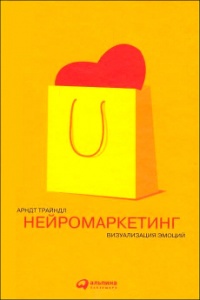Книга Код убеждения. Как нейромаркетинг повышает продажи, эффективность рекламных кампаний и конверсию сайта - Кристоф Морен
Читать книгу Код убеждения. Как нейромаркетинг повышает продажи, эффективность рекламных кампаний и конверсию сайта - Кристоф Морен полностью.
Шрифт:
-
+
Интервал:
-
+
Закладка:
Сделать
Перейти на страницу:
Перейти на страницу:
Книги схожие с книгой «Код убеждения. Как нейромаркетинг повышает продажи, эффективность рекламных кампаний и конверсию сайта - Кристоф Морен» от автора - Патрик Ренвуазе, Кристоф Морен:
Комментарии и отзывы (0) к книге "Код убеждения. Как нейромаркетинг повышает продажи, эффективность рекламных кампаний и конверсию сайта - Кристоф Морен"












